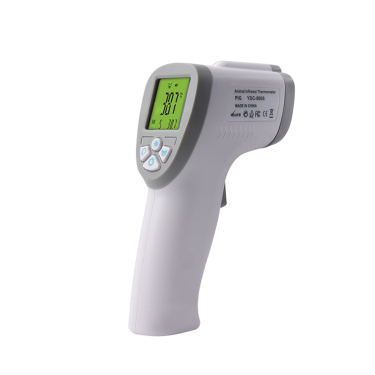
# Dog Thermometer: Essential Tool for Monitoring Your Pet’s Health
## Why Every Pet Owner Needs a Dog Thermometer
As a responsible pet owner, monitoring your dog’s health is crucial for their wellbeing. One of the most important tools in your pet care arsenal should be a reliable dog thermometer. Unlike human thermometers, these specialized devices are designed specifically for canine use, providing accurate readings that can help you detect potential health issues early.
## Understanding Normal Canine Body Temperature
Before using a dog thermometer, it’s essential to know what constitutes a normal temperature range for your pet:
– Normal range: 101°F to 102.5°F (38.3°C to 39.2°C)
– Mild fever: 103°F (39.4°C)
– High fever: 104°F (40°C) or above
– Dangerously high: 106°F (41.1°C) requires immediate veterinary attention
## Types of Dog Thermometers Available
Modern pet care offers several options for monitoring your dog’s temperature:
### 1. Digital Rectal Thermometers
The most accurate method, these thermometers provide quick readings when inserted about 1 inch into the rectum. Always use pet-safe lubricant and handle your dog gently during this process.
### 2. Ear Thermometers
Infrared ear thermometers measure the temperature inside the ear canal. While less invasive, they may be slightly less accurate than rectal readings.
### 3. Non-Contact Thermometers
These allow temperature taking without physical contact by measuring infrared heat from the ear or other body parts. They’re convenient but may have wider variability in results.
## How to Properly Use a Dog Thermometer
Proper technique ensures accurate readings and keeps your pet comfortable:
1. Prepare your dog by keeping them calm and still. Having an assistant can help.
2. For rectal thermometers, apply a pet-safe lubricant to the tip.
3. Gently insert the thermometer about 1 inch into the rectum (for rectal models).
4. Wait for the beep or recommended time before removing.
5. Clean the thermometer thoroughly after each use.
6. Record the reading along with the date and time for future reference.
## When to Check Your Dog’s Temperature
Regular temperature checks aren’t necessary for healthy dogs, but you should use your dog thermometer when you notice:
– Lethargy or unusual tiredness
– Loss of appetite
– Shivering or panting without obvious cause
– Nasal discharge or coughing
– Before and after vaccinations
– During recovery from illness or surgery
## Choosing the Right Dog Thermometer
Consider these factors when selecting a thermometer for your pet:
Accuracy: Look for clinical-grade devices with proven reliability.
Speed: Faster readings make the process easier for both you and your dog.
Comfort: Consider your dog’s temperament when choosing between types.
Ease of cleaning: Waterproof models are easier to sanitize.
Display: Large, backlit screens help with reading results.
## Maintaining Your Dog Thermometer
Proper care ensures your thermometer remains accurate and hygienic:
– Clean after each use with alcohol wipes or mild soap
Keyword: dog thermometer
– Store in a protective case
– Replace batteries regularly
– Check accuracy periodically by comparing with a known good thermometer
– Replace if damaged or giving inconsistent readings
## Understanding Temperature Variations
Remember that several factors can affect your dog’s temperature reading:
– Recent exercise may elevate temperature temporarily
– Stress or excitement can cause slight increases
– Environmental temperatures influence body heat
– Age affects normal ranges (puppies often run slightly warmer)